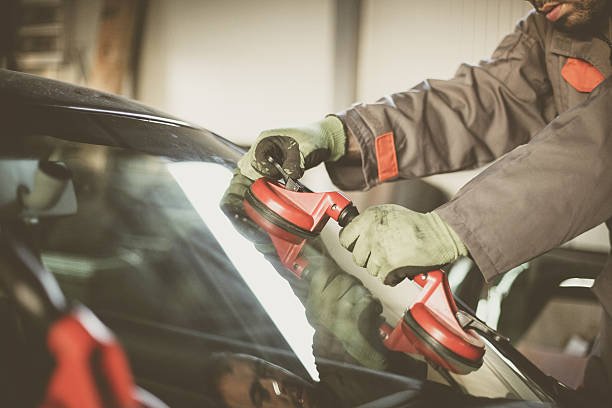
Newport Beach Express Auto Glass
Clear Views, Safe Journeys – Newport Beach's Premier Windshield Repair Experts!
Driving with a cracked windshield is a hazard that many drivers overlook. It might seem like a minor inconvenience, but the risks associated with a compromised windshield can be significant. In this blog post, we will explore why driving with a cracked windshield is dangerous, the potential consequences, and why it's essential to address windshield damage promptly. To better understand the various types of auto glass damage and their impact on safety, check out our article on types of auto glass damage.
A crack, especially if it’s in the driver's line of sight, can distort and obstruct vision. This distortion can make it difficult to judge distances, spot hazards, or react to changing road conditions effectively.
Cracks can also cause glare or reflection issues, particularly when driving at sunrise or sunset. This glare can momentarily blind a driver, increasing the risk of accidents.
The windshield contributes significantly to the structural integrity of a vehicle. In the event of a rollover or collision, a cracked windshield may not perform effectively in providing the necessary support to the vehicle’s roof, increasing the risk of a collapse.
The windshield plays a crucial role in the proper deployment of passenger-side airbags. A cracked windshield may not withstand the force of an airbag, leading to improper deployment and an increased risk of injury during an accident.
Driving with a significantly cracked windshield can be illegal in many regions, subjecting drivers to traffic violations and fines.
Insurance claims might be denied or complicated if an accident occurs and the vehicle has a pre-existing windshield crack. This could lead to higher out-of-pocket expenses for repairs.
A cracked windshield is less capable of withstanding further impact, whether from debris or in an accident. Even a small object can cause a significant crack to worsen or the windshield to shatter.
In the event of a shattering windshield, the risk of injury from glass shards is significantly increased, both for the driver and passengers.
A vehicle with a cracked windshield can have a substantially reduced resale value. Potential buyers or dealers may view it as a sign of neglect, raising concerns about the overall maintenance of the vehicle.
Delaying windshield repair can lead to higher costs. A small crack can often be repaired easily and at a lower cost. However, if left unattended, it may require a full replacement, which is more expensive.
Extreme temperatures, both hot and cold, can worsen a windshield crack. In cold weather, the glass contracts, and in hot weather, it expands. These fluctuations can cause a crack to spread rapidly.
Moisture can seep into a cracked windshield, weakening its structure. Dirt and other contaminants can also enter the crack, making it more difficult to repair over time.
Driving with a cracked windshield can be a constant source of stress and distraction. Worrying about the crack can divert a driver’s attention from the road, increasing the risk of accidents.
For some drivers, the presence of a crack can lower their confidence on the road, making them more hesitant and potentially affecting their driving ability.
The primary reason to repair a cracked windshield promptly is safety. Ensuring that your vision is unobstructed and that your vehicle retains its structural integrity is crucial.
Addressing windshield damage early is usually more cost-effective. Small cracks can often be repaired quickly and at a lower cost compared to a full replacement.

A professional can assess whether a crack can be repaired or if a full replacement is necessary. They can also ensure that the repair or replacement is done correctly, maintaining the safety and integrity of the vehicle.
Using high-quality materials for windshield repair or replacement is essential for the longevity and effectiveness of the repair.
Driving with a cracked windshield is a risk that should not be ignored. The dangers range from compromised visibility and structural integrity to legal and financial implications. Prompt repair is not just a matter of fixing a cosmetic flaw, it's a critical safety issue. By understanding the risks and taking immediate action, drivers can ensure their safety and that of others on the road. Wondering when it's safe to resume driving after auto glass replacement? Find out more about driving after glass replacement in our comprehensive article.
100 Vilaggio #235 Newport Beach, CA 92660, United States
Monday to Sunday 7 AM to 9 PM